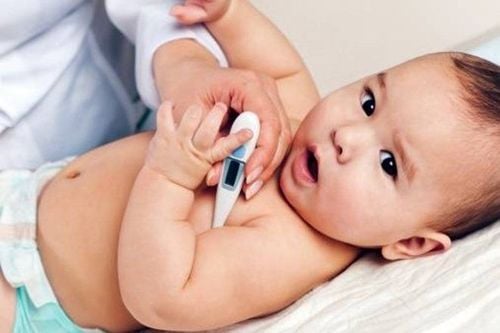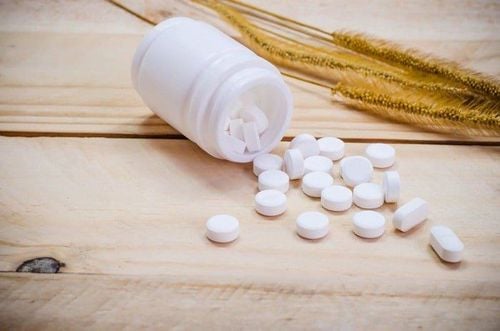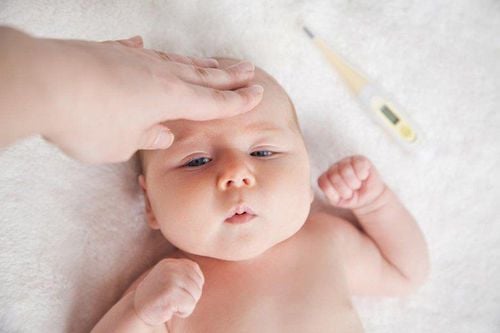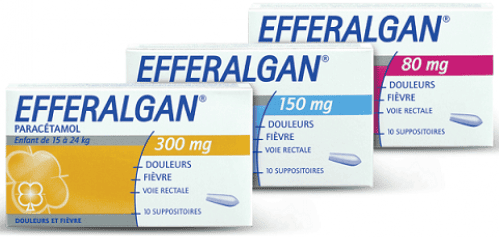This is an automatically translated article.
The article was consulted with Specialist Doctor I Dang Thi Ngoc Chuong - Department of Pediatrics - Neonatology, Vinmec Central Park International General Hospital.Newborn baby's body temperature should be monitored and checked regularly every day. Because that is the simplest and best way to recognize abnormal signs in the child's body. From there, mothers can prevent and take their children to medical facilities in time.
1. Monitor baby's temperature
Newborn body temperature :Normal baby temperature : Between 36.5°C - 37.2°C (at armpit temperature). Newborns can have hypothermia even in the summer, making them more susceptible to illnesses like pneumonia. Therefore, it is necessary for the child to lie in a well-ventilated room, room temperature 28-30°C (>25°C), with enough light. If the child's temperature is >37.5°C : Put the child in a well-ventilated room, loosen the clothes, apply a warm towel to the child. children in positions including: forehead, armpit, groin. Closely monitor the child's temperature. If >38.5°C take the child to the nearest medical facility, give the child fever-reducing medicine. If the temperature is <36°C: Actively rewarm the baby with a blanket or skin-to-skin method. Measure the newborn's body temperature at different points, if it is found in the following displayed parameters, it means that the baby is still normal:
Rectal measurement: Newborn body temperature from 36.6 - 38°C If ear measurement : Newborn body temperature from 35.8 - 38°C Or, oral measurement : Newborn body temperature from 35.5 - 37.5°C Axillary body temperature : Newborn body temperature from 34, 7 – 37.3°C. To ensure that the body temperature is always in a normal state of exchange, it is best that the baby's body temperature should always be maintained between 36-37°C. If the body temperature differs from this level, either an increase of 1°C or a drop of 1°C are both very dangerous. For example, if the baby's temperature is 38°C, it's a mild fever and over 39°C is a high fever. All of these temperatures are measured from the baby's anus and it will have a slight difference compared to other points on the body.
=>> Useful information from Master, Doctor Phan Ngoc Hai - Department of Pediatrics - Neonatology - Vinmec International General Hospital: How to measure body temperature when a child has a fever
Normally, the temperature is measured in the compartment The oral temperature is always 0.3 -0.5°C lower than the anal temperature. Meanwhile, the temperature in the armpit and neck is always 0.3 -0.5°C lower than the oral cavity. Thus, if measuring a newborn's temperature, taking an rectal measurement is the most accurate result because it is the basic temperature to ensure all body activities are in a normal state.
Trắc nghiệm: Sự phát triển tinh thần, vận động của bé thế nào là đúng chuẩn?
Khi nào bé biết nói, biết hóng chuyện hay biết cầm cốc là "đúng chuẩn"? Điểm xem bạn biết được bao nhiêu mốc phát triển tinh thần, vận động "đúng chuẩn" của bé nhé!The following content is prepared under supervision of Thạc sĩ, Bác sĩ y khoa, Ma Văn Thấm , Nhi , Phòng khám Đa khoa Quốc tế Vinmec Dương Đông(Phú Quốc)
2. How to measure body temperature for babies
There are many methods of measuring the body temperature of children. Usually taking an rectal temperature is the most accurate method. However, parents can also use oral temperature for children over 4 years old, ear temperature for children over 6 months old. Measuring body temperature in the armpit is the least accurate method, but it is very convenient for mothers, especially for babies under 3 months old. If the temperature in the armpit is below 37.2°C, parents should use an additional rectal method of measuring body temperature.Among the points of measuring body temperature on the newborn's body, the anus is the place to get the most accurate temperature readings. The appropriate age to measure temperature in this position is babies from 6 weeks old and under. For babies from 5 weeks and up, the body temperature can be measured under the armpit because the temperature difference compared to the anus is only 0.2°C.
Parents should use electronic thermometers instead of mercury thermometers because it is less expensive, more common and safer. Mercury is very toxic, and if the thermometer is broken, it can be dangerous for young children. Here are the methods of taking the child's temperature:
2.1 Take the temperature in the armpit Keep the thermometer in the child's armpit (need to dry the armpit before measuring). Ask your child to hold the thermometer by pressing his elbow to his chest for about 4-5 minutes.

Wash the thermometer with cold water and soap and then rinse with water. Place the tip of the thermometer under the child's tongue, ask the child to hold the thermometer with his lips, keeping his lips closed around the thermometer. Keep the thermometer in place: With a mercury thermometer, children need to hold it for about 3 minutes and with an electronic thermometer, children only need to hold it for less than 1 minute. 2.3 Ear temperature measurement This method is not applicable to children under 6 months of age. If your child has just been outside in the cold, you need to wait at least 15 minutes before taking the temperature. Ear canal and ear disease will not affect the baby's body temperature display. Ear temperature measurement is performed as follows:
Pull the child's outer ear before inserting the thermometer. Hold the thermometer probe in the child's ear for 2 seconds. 2.4 Rectal temperature measurement For infants and young children lying face down on an adult's lap. Apply a little lubricant (e.g. vaseline) to the end of the thermometer. Gently place the thermometer in the child's anus until the silver tip of the thermometer is no longer visible (about 0.6 - 1.3cm inside the anus). Keep the thermometer in place: Wait about 2 minutes for a mercury thermometer and 1 minute for an electronic thermometer.
3. How to handle when the baby's temperature is abnormal

If the baby's temperature is lower than 36.5°C, the mother needs to warm the baby immediately. If your baby's temperature is higher than 37.5°C, he or she is hot. Mothers need to keep the baby in a cool place, remove blankets as well as thick clothes, cool the body, feed the baby more, drink more water if needed and continue to monitor the baby's temperature. When the temperature is higher than 38°C, the child has a fever. Mothers need to cool off, take a warm towel to apply to the child immediately, can use fever-reducing medicine if necessary, and soon take the child to the nearest medical facility for examination and treatment. Newborns always need special care. The body temperature of a newborn is also different from that of an adult. Parents or caregivers need to be aware of this and monitor the child's temperature every day so that the child can receive the most appropriate care.
To prevent diseases that babies often get, parents should pay attention to nutrition to improve children's resistance. At the same time, add supporting foods containing lysine, essential micro-minerals and vitamins such as zinc, chromium, selenium, B vitamins,... snacks and less digestive problems.
Parents can learn more:
Why do you need to supplement Lysine for your baby?
The role of zinc - Guidelines for reasonable zinc supplementation
Please visit the website Vinmec.com regularly and update useful information to take care of your baby and family.















